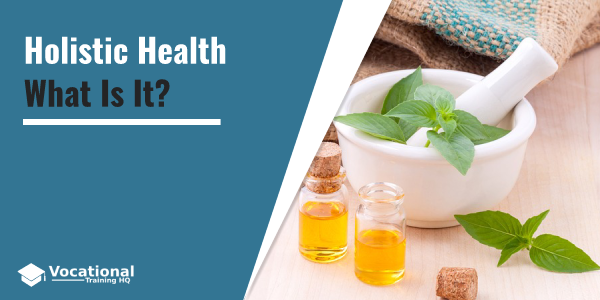Holistic health practitioners aim to promote wellness so they work on the whole body.
While the term ‘holistic’ describes something that is beyond individual symptoms, practitioners offer services that aim to treat symptoms as well.
You need to know that holistic practices are closely related to complementary and alternative medicine (CAM).
Most practitioners have licenses in massage and bodywork but also may use a bunch of other healing arts.
Article Table of Contents
Popular Programs
In fact, the services offered by holistic practitioners are those out of the mainstream.
Nevertheless, these services become very popular.
Practitioners in this sphere often work together with various healthcare specialists in integrated health centers.
Usually, it is common for a certain set of specialties.
You need to know that holistic healthcare is a pretty diverse field.
Usually, professionals in this sphere have several specialties however they have only one particular bent.
The important point is that numerous holistic practices have a kind of spiritual element while some of them have scientific evidence.
The most popular practices include such options as:
- Energy work;
- Therapeutic movement;
- Massage and bodywork;
- Nutrition and herbology;
- Homeopathy;
- Aromatherapy;
- Mind-body therapies.
Holistic therapy uses various methods and tools from wellness coaching to equestrian therapy.
Holistic health practitioners usually work in such facilities as spas, integrated health centers, wellness centers or just start their own practice.
Holistic Health Practice Issues
Some states try to guarantee the freedom to practice while introducing rather specific standards as well.
In other words, there are specific procedures that only licensed specialists can perform.
Also, there are procedures that require a professional disclosure statement.
For example, in Minnesota, there are 22 alternative practices mentioned in the state code.
The list includes various healing practices that involve food, food supplements, and physical forces such as light and heat.
Also, there is some info about the uses of these therapies by professionals who have a healthcare license.
Speaking of specific areas, nutrition and herbology can be rather tricky.
Practitioners that work in these spheres need to make sure that they don’t perform the duties of other specialists such as dietitians.
However, it may differ in various states as each state sets its specific mandates.
According to the California code, anyone can provide nutritional advice but there are strict limitations of what can and cannot be said.
Holistic Health Licensing
Holistic practitioners can get their license in some jurisdictions of California.
For example, Chula Vista issues licenses for holistic practitioners who also provide massage services.
To get this license, you need to complete 1000 hours of training and obtain certification by the National Certification Board for Therapeutic Massage and Bodywork.
You need to know that 1000 hours of training is a common requirement in most jurisdictions in California.
Education for Holistic Health Practitioners
There are some great options for those who want to get their diploma in holistic health around the country.
Those who want to take their education to an as high level as possible, there are naturopathic and naphrapathic medicine graduate programs.
There are also training programs in acupuncture in some states.
You need to know that usually, students can complete exactly as many hours as they need to get their certification.
One other important point is that most holistic practitioners have an excellent education.
According to the latest research by Feldenkrais, about 90% of practitioners have a degree.
You need to know that there are lots of adjunctive programs.
Also, most third-party organizations offer programs that meet all possible standards for certain disciplines.
One significant point is that most relatively whort holistic programs include massage classes as well.
In other words, there is a bunch of massage therapy classes as well as numerous related disciplines.
It may be such classes as aromatherapy and others,
Usually, hydrotherapy is one of the most essential parts of the massage curriculum.
Speaking of holistic courses, they may include such subjects as yoga teaching, nutrition, and herbology, or Reiki and craniosacral therapy.
If you want to enroll in a shorter course, you need to know that they are focused on particular areas.
For example, you can complete 200 hours of training in aromatherapy.
Movement Teaching and Therapy
There are movement courses available for those who want to help people achieve wellness.
It may include such options as Pilates and yoga.
Speaking of yoga therapy it differs significantly from traditional yoga as it aims to meet the specific needs of each client.
It can be both individual therapy or group classes.
The Feldenkrais Method and the Alexander Technique are methods that are based on therapeutical aspects and can be offered in individual and group settings.
There are third-party organizations that offer credentials for movement instructors.
You can become a Registered Yoga Teacher (RYT) addressing the Yoga Alliance.
After completing some additional training, you can get a Yoga Therapist certification addressing the International Association of Yoga Therapists.
Just keep in mind that the completion of an accredited program is required.
